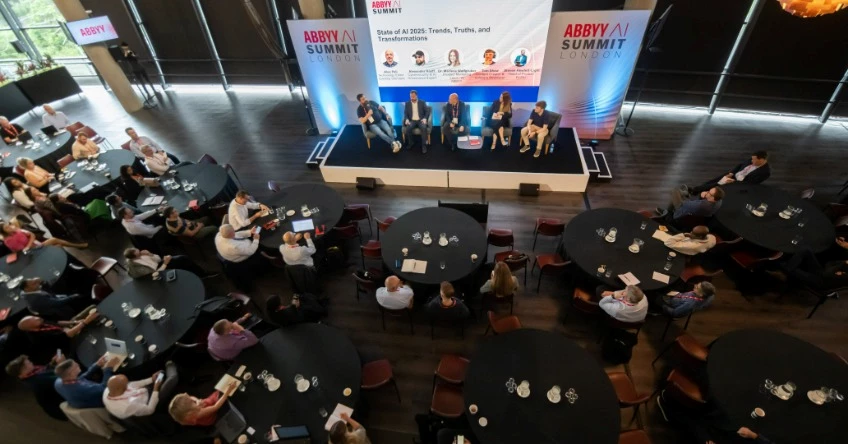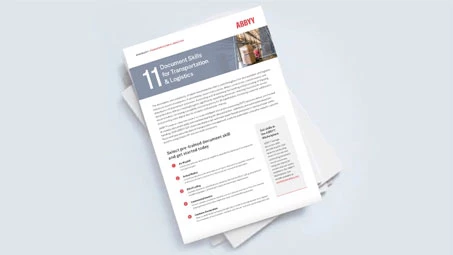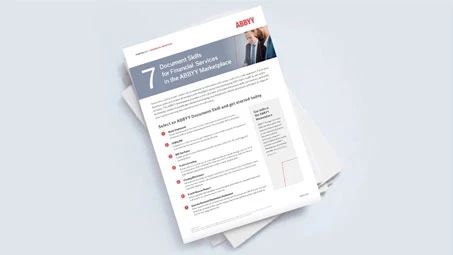
Big ideas belong in a grand setting, and few venues outgun Emirates Stadium, the home of Arsenal FC. The London leg of ABBYY’s 2025 world tour of AI Summits was packed with insights and plenty of pragmatism.
Ulf Persson, CEO, set the scene with an analogy of robot footballers and he posed some great questions. If we want to include these ‘next-gen players’ into a conventional team, what are the practical challenges or rule changes?

One thing I learned is that, at the enterprise level, the big picture matters. When the stakes are high, proven solutions are more valuable than flashes of maverick genius.
The AI Summit covered many ideas, yet themes emerged as rapidly as Gabriel Martinelli scorching Arsenal’s wing. Chief among these were two concepts, often glossed over in favour of wow moments: privacy and compliance.
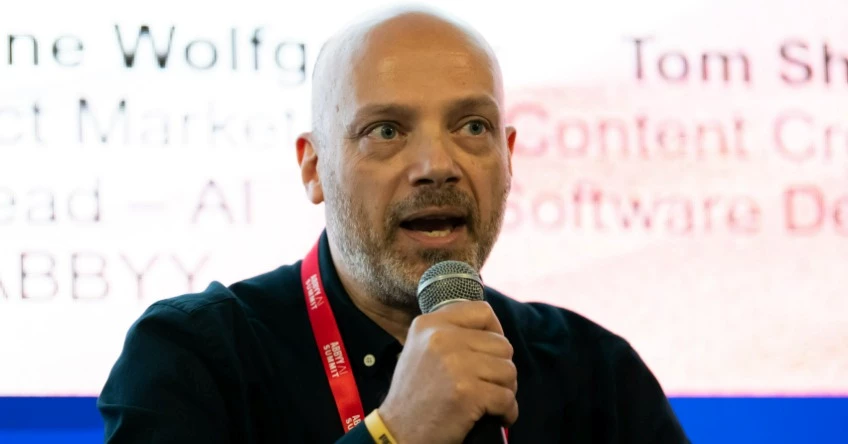
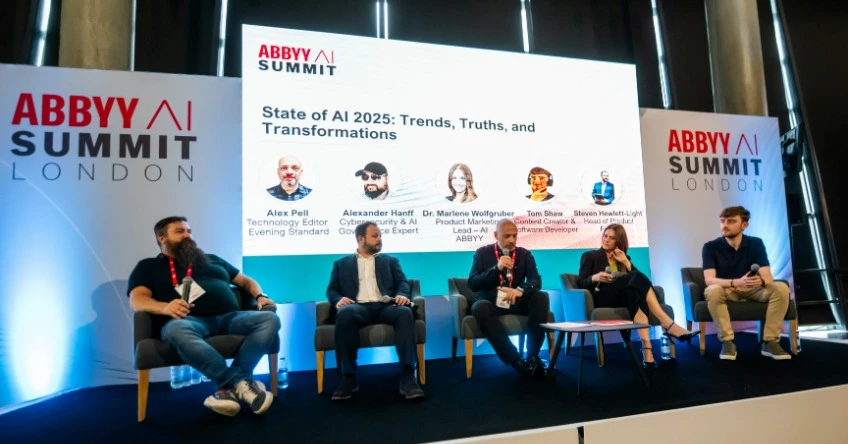
The opening panel, which I moderated, unanimously agreed that AI processes can be transformative, so long as they are fully explainable. This is partly a matter of law, especially for firms operating in the EU, due to its prescriptive legal framework on risk, and yet is even more true for highly regulated industries.

It’s also a question of ethics, said privacy and governance expert, Alexander Hanff. He explained some of the human dimensions of rolling-out AI in ways that can entrench bias into HR functions, or lead to poor decision-making. The critical factor is consent, said Hanff, who warned that many companies do not take this seriously. He compared the AI boom to the wild times prior to when the principles of GDPR became table stakes for handling personal data.
This is not ESG hand-wringing, it’s economics, added Hanff. Partly because getting it wrong is more costly than taking the time to do it right, but also because baking-in high standards will give you a selling-point in other markets.
One problem is relying on ‘black box’ AI solutions, where the outputs cannot be justified, said Steven Hewlett-Light, Managing Director at FinTrU, a firm which protects the integrity of global financial institutions, during his own session. Even the developers of AI systems often struggle to explain how these produce certain outcomes, or make them do so consistently. And that doesn’t sit well with a regulator, he added.
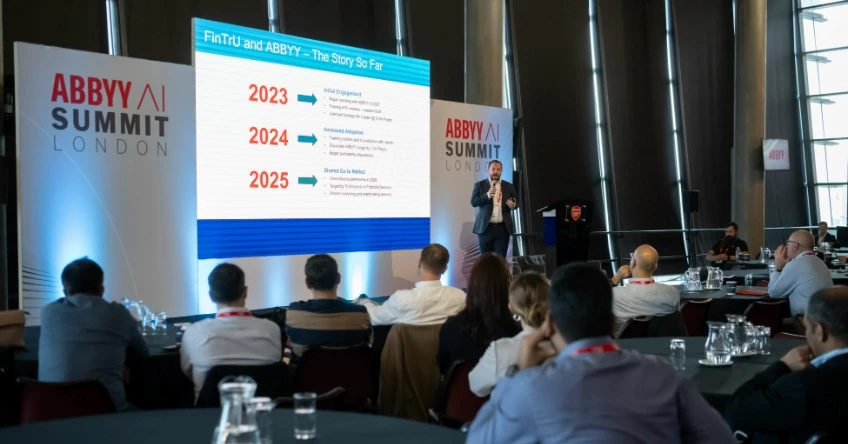
Some of these issues are technical — for instance, understanding that LLMs (Large Language Models) are notoriously inconsistent and that the nuances of how each prompt is framed are critical, said Hewlitt-Light. Others are functional, in the sense that the sources might not be credible. This is particularly so with generative AI, which tends to hallucinate facts, or it can simply be the result of unreliable data.

The vast majority of the data held within large organizations is unstructured, said Slavena Hristova, Director of Product Marketing at ABBYY, during her own no-nonsense session at the AI Summit.
Of course, the real genius of AI is that it can impose order on chaos, or spot patterns humans miss. However, relying on it to do so without a proper grasp of how this is actually happening is like asking a genius toddler to run the lunch hall of a kindergarten, she warned. What could possibly go wrong?
And this brings us neatly onto some of the main takeaways of the ABBYY London AI Summit.
The big step towards getting value from AI is to ask the same questions that a conventional consultant would do, said Jon Knisley, ABBYY Product Marketing Manager. What are the real problems in the organization, how can reliable data be accessed, and what human oversight is required? Only then can you design AI systems to meet your goals, said Knisley, adding that ABBYY calls this Process Intelligence. It is the key that unlocks the potential of AI.
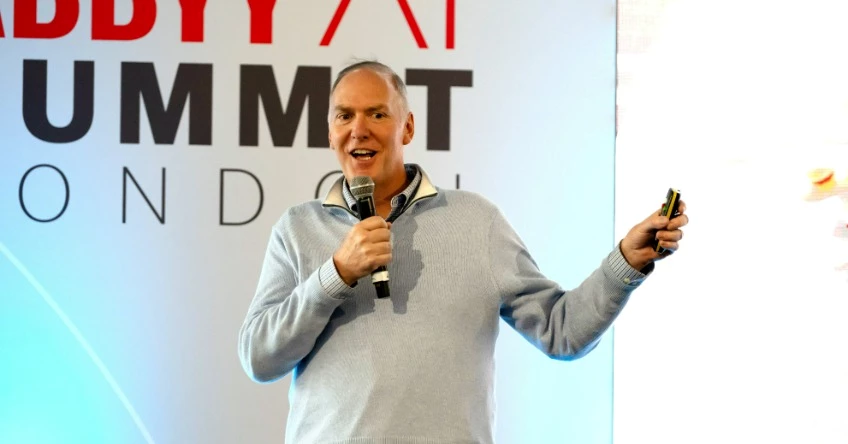
You’d think this kind of holistic perspective was obvious—but apparently not. At least, not for many large firms. The typical enterprise-level organization has more than 1,000 AI apps running, many of them in silos, said Knisley. Others rely on creaking legacy solutions, such as Health New Zealand, which was using a single Excel spreadsheet to track $28 billion of public money, before recently switching to a smarter path, he added. The difference here is that well-designed AI solutions shorten the ‘time to value’ for a change-management process from several months with a traditional consultancy down to a handful of weeks, said Knisley.

Choosing the right tool for the job is vital, explained Dr Marlene Wolfgruber, AI Product Marketing Lead at ABBYY, during her own illuminating keynote, after a short break for a stadium tour.
A common pitfall is thinking that smart automation—or agentic AI—is always the answer, she said. Of course, in many situations, these agents achieve incredible feats. In others, they simply wreak chaos, said Wolfgruber. This is, apparently, due to a toxic combo of misplaced confidence and muddled planning. Some of this volatility is tolerable in, say, a creative scenario. For other situations, it's an unacceptably high risk.
Agentic technology is powerful, yet it’s not as mature as people think, added Wolfgruber. And it relies upon the same fundamentals of Process Intelligence. Put simply: garbage in—and chaotic thinking—is unlikely to fly well.
The message of the day was plain. To deploy AI, we must keep the mission clear, the data clean, and— to return to our football analogy—get the correct robots into their best positions on the pitch while adhering to the rules.
Anyone eager to learn what this means in practical terms can grab ABBYY’s free Process Automation Handbook to help them navigate the agentic hype. Or come along to next year’s event.
As an Arsenal fan, I never dreamed I’d ‘perform’ in this stadium of legends. Kudos to ABBYY for making it happen.
